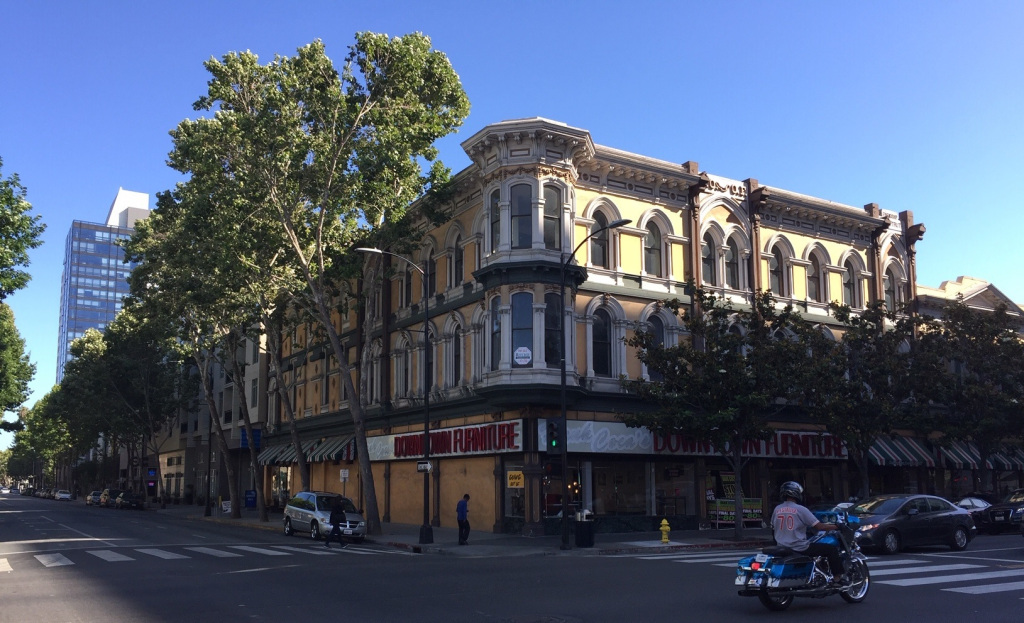While it might be tempting to compare the dramatic rise of Silicon Valley’s tech titans to the Gold Rush that drew ’49ers west, a better comparison is the arrival of the Transcontinental Railroad — at least the way Cary McClelland sees it.
The train shrunk the size of the country; it distorted time. It was disorienting in the same way technology warps time and space, putting far-flung communities no more than a few clicks away, McClelland says.
And, like a railroad barreling down the tracks, there is an inertia to the Bay Area’s economy that feels unstoppable. Rents keep going up. Traffic gets worse. As McClelland puts it, “It sometimes feels as if we are all in the train’s engine: The quicker things change, the faster we move to adapt, the hotter the economy gets, the more we are all getting cooked. A perpetual motion machine that will never bust.”
McClelland’s book, Silicon City: San Francisco in the Long Shadow of the Valley, is an oral history capturing this particular moment in the Bay Area’s modern boomtimes. In it, McClelland plays the part of a pointillist painter, meticulously plunking small, seemingly one-dimensional narrative dots: the tech worker, the VC investor, the homeless guy, the social justice warrior, the teacher — people who often seem pigeonholed as one thing or another in public discourse, who talk about each other without really talking to each other.
But McClelland carefully layers each dot, each narrative, and with it, a little window into the Bay Area widens until you step back and see it: the full picture.
McClelland will be in town on Wednesday, Jan. 9, for a talk at SPUR’s headquarters in San Francisco to talk about his book. This news organization sat down with McClelland to get a preview. The questions and responses have been edited for clarity and length.
Q: Why did you decide to write this book?
A: The book is very similar to the documentaries I used to do. I was sitting in a city I called home, and I was looking around and identifying the problems that were very visibly part of all of our lives. We were downtown in San Francisco, and you could see the widening gap. It was occurring in the city on the streets. All of us had best friends who had to leave the city. And, the more work I did in the community (as a volunteer doing pro bono legal work while getting a law degree at Stanford University), the sharper those stories got. It seemed that we, at that point, didn’t know how to have a regional conversation about how all the different things that were occurring were knitted together and how our lives were related to each other. We didn’t know how to understand ourselves as a community. And, that was what I got really interested in.
Q: One of your interview subjects, Margaret Zhao, grew up in San Francisco’s Richmond District and later came back to work in tech, and she describes a feeling of inertia in the Bay Area, saying: “And if you’re from here, your world is changing, you can’t move, but they (the tech workers) can. I imagine that feeling is exceptionally terrifying.” Were you conscious of that sense of inertia before writing the book?
A: It’s very hard to write a book like this in the middle of a crisis. And I think that feeling is an inherent part of the phenomenology of how we rise to meet a challenge and overcome it, or not. Everybody agreed there was something happening, that it was troubling, and that they felt they had some responsibility to align themselves with solving it. The sense of inertia is a natural consequence of being in the middle of a large problem, having decided to address it, and to be unresolved on whether you’re going to succeed or fail. So, everybody feels like they are in the middle of a long struggle, and I don’t think that’s wrong.
Q: Several interviewees describe a number of cultural shifts that have taken place throughout the Bay Area, both social and economic. One of those is this shift toward a service and sharing economy, where the products are not physical. They’re in the cloud, they’re software. And, at the same time, there this lack of engagement from the tech industry in the issues that surround their campuses. Is that a parallel relationship?
A: One thing the book is trying to tease out is the impact of many of these technologies explicitly and then the byproduct of many of them unintentionally is to sort of disengage us from a sense of local connection and community that we, whether we know it or not, need to have for healthy communities and healthy cities. Absent a sense of connection to the man who is doing work alongside you, for you, or with you, or you are working for, it’s very hard to keep a sense of a major urban city alive in America.
The argument about what a community is that, for example, Facebook or Twitter are making, is that it’s something that lives online and that it doesn’t have a physical place for itself. It almost explicitly doesn’t. Twitter is a place for conversations and those conversations don’t have a physical form and now bounce across the country and the world. Facebook is something where you can build your own community. Whether it wants to or not, that’s at odds with the fact that you already have one. You already have one — whether it’s defined by your school, your family, your neighborhood or your work place or a region or a state.
And the tech industry moves at faster cycles. So, people’s careers oscillate quickly through different jobs and when you don’t have a sense you’ll be at a job for — let alone 20, 30 years — five or 10 years, you’re fundamentally disincentivized to making certain attachments to where you live and who you live with and the community that’s outside your bedroom and the city you may or may not find yourself a citizen in within a few years.
If you go:
When: 6 p.m., Wednesday, Jan. 9
Where: 654 Mission Street, San Francisco, CA 94105-4015
How much: Free









